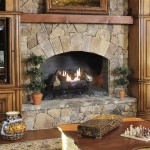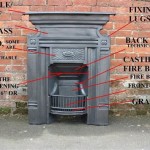Do not use any external links.
Linear Electric Fireplace Reviews: A Comprehensive Guide
Linear electric fireplaces have surged in popularity as a modern heating and aesthetic solution for homes and commercial spaces. Their sleek, elongated design seamlessly integrates into contemporary interiors, offering the visual appeal of a traditional fireplace without the complexities of fuel sourcing, venting, or extensive installation. This article provides a detailed overview of linear electric fireplaces, exploring their features, benefits, and factors to consider when choosing the right model.
Unlike their conventional counterparts, linear electric fireplaces operate on electricity, converting electrical energy into heat using a heating element. The visual aspect, simulating flames and embers, is achieved through LED technology, projecting realistic fire effects onto a screen or behind a bed of decorative media. This allows for independent control of the heat and flame effects, enabling users to enjoy the ambiance of a fireplace year-round, regardless of the heating needs. Furthermore, most linear electric fireplaces are designed with safety in mind, incorporating features such as overheat protection and cool-to-the-touch glass surfaces, making them a viable option for households with children or pets.
Understanding the Key Features of Linear Electric Fireplaces
Linear electric fireplaces boast a range of features that contribute to their functionality and appeal. These features often vary between models and manufacturers, so understanding them is crucial for making an informed decision. One of the most important aspects is the heating capacity, typically measured in British Thermal Units (BTUs) or wattage. A higher BTU or wattage rating indicates a greater heating output, suitable for larger spaces. However, it's important to consider the square footage of the area to be heated to ensure the fireplace is appropriately sized. Overly powerful units can lead to overheating, while underpowered units may struggle to provide adequate warmth.
The visual flame effect is another key consideration. Modern linear electric fireplaces utilize advanced LED technology to create realistic and customizable flame displays. Many models offer adjustable flame colors, brightness levels, and speed settings, allowing users to personalize the ambiance to their preferences. Some fireplaces also include features such as ember bed lighting and log set illumination, further enhancing the visual realism. The quality of the flame effect is directly related to the technology and design of the fireplace, so it's advisable to view the flame display in person or watch video demonstrations before making a purchase.
Control options also play a significant role in the user experience. Most linear electric fireplaces come with a remote control, enabling users to adjust the heat, flame effects, and other settings from a distance. Some models also offer touchscreen controls or smartphone app integration, providing even greater flexibility and convenience. Features like timers, thermostats, and programmable schedules allow users to automate the operation of the fireplace, optimizing energy consumption and maintaining a comfortable temperature. The ease of use and responsiveness of the controls can significantly impact the overall satisfaction with the fireplace.
Installation Considerations for Linear Electric Fireplaces
The installation of a linear electric fireplace is generally simpler than that of a traditional fireplace, but it still requires careful planning and execution. Linear electric fireplaces are often designed for wall mounting, recessing into a wall, or freestanding placement. Wall-mounted units typically require minimal structural modifications, while recessed installations necessitate framing and electrical wiring within the wall cavity. Freestanding models offer the greatest flexibility, as they can be placed virtually anywhere with access to a power outlet.
Electrical requirements are a critical factor to consider during installation. Most linear electric fireplaces operate on a standard 120-volt circuit, but some larger models may require a dedicated 240-volt circuit. It's essential to consult the manufacturer's specifications and engage a qualified electrician to ensure the electrical wiring is adequate and compliant with local building codes. Overloading a circuit can pose a fire hazard and compromise the performance of the fireplace. Proper grounding and surge protection are also essential for safe and reliable operation.
Clearance requirements are another important consideration. While linear electric fireplaces produce significantly less heat than traditional fireplaces, it's still necessary to maintain adequate clearance between the fireplace and combustible materials such as furniture, curtains, and wall coverings. The manufacturer's instructions will specify the minimum clearance distances for safe operation. Failure to adhere to these requirements can create a fire hazard and void the warranty. Additionally, consider the placement of the fireplace in relation to other heating sources, air vents, and doorways to ensure efficient heating and airflow.
Evaluating Performance and Efficiency
The performance and efficiency of a linear electric fireplace are crucial factors to consider when making a purchase. The heating capacity should be appropriate for the size of the room, and the fireplace should be able to maintain a consistent and comfortable temperature. Some models offer multiple heat settings, allowing users to adjust the output according to their needs. Evaluating the heating performance during different ambient temperatures can provide valuable insights into the fireplace's capabilities.
Energy efficiency is another important aspect to consider. Linear electric fireplaces are generally more energy-efficient than traditional fireplaces, as they convert nearly 100% of the electrical energy into heat. However, energy consumption can vary depending on the size of the fireplace, the heating output, and the frequency of use. Look for models with energy-saving features such as timers, thermostats, and LED lighting to minimize energy costs. Comparing the energy consumption ratings of different models can help you choose the most efficient option.
Noise level is often overlooked but can significantly impact the user experience. Some linear electric fireplaces can produce noticeable noise from the fan or heating element, which can be distracting or annoying, especially in quiet environments. Reading customer reviews and listening to the fireplace in operation can provide insights into the noise level. Look for models that are specifically designed for quiet operation or offer adjustable fan speeds to minimize noise.
Beyond these factors, long-term reliability and maintenance requirements should also be considered. Look for models from reputable manufacturers with a proven track record of quality and durability. Check the warranty terms and conditions to ensure adequate coverage for potential defects or malfunctions. Regular cleaning and maintenance, such as dusting the heating element and cleaning the glass front, can help extend the lifespan of the fireplace and maintain its performance. User reviews and expert opinions can provide valuable insights into the long-term reliability and maintenance requirements of different models.
The design and stylistic integration should be considered. Linear electric fireplaces offer a broad range of aesthetic options. With different colors, media types (crystals, logs, stones), and framing styles, considering the existing décor is vital to ensure seamless integration into the space's overall design scheme. This may involve choosing a fireplace with a specific finish to match existing furniture. Alternatively, a contrasting color or media may be chosen to create a focal point in a room. Ultimately, the objective is to achieve a cohesive design where the fireplace complements its surroundings and is visually appealing.
Budget considerations should also be included in research. The price range for linear electric fireplaces can vary greatly depending on the size, features, and brand. Setting a budget before beginning shopping can help narrow the selection process down to models that are affordable. Beyond the initial purchase price, consider the long-term operating costs, such as electricity consumption and replacement parts. It is important to strike a balance between affordability and value, prioritizing features and qualities that are most important for the desired aesthetic and utility.
Considering all these aspects allows for an informed decision, ensuring the chosen linear electric fireplace adequately meets all requirements. This improves overall satisfaction with the purchase and enhances the ambiance of the space in which it is installed.

Reviews For Dimplex Ignitexl 74 In Built Linear Electric Fireplace Insert Pg 1 The Home Depot

Modern Ember Aerus 50 Inch Smart Linear Electric Fireplace Recessed And Wall Mount Multiple Flame Colors Works With Alexa Google Assistant Target

Modern Flames Challenger 50 Inch Wall Mount Recessed Linear Electric Fireplace Affordable Insert Cef 50b Fireplaces Depot

Dimplex Sierra 60 In Wall Built Linear Electric Fireplace Black Sil60 The Home Depot

Top 5 Linear Electric Fireplaces Review New Technology Is Finally Here

Erommy 50 Electric Fireplace Insert Recessed And Wall Mounted Linear With Touch Screen Timer 12 Color Flamer 750 1500w Com

Dimplex Ignite Xl Bold 74 Linear Electric Fireplace Review Worth It Choice

Napoleon Entice 36 Inch Wall Mount Recessed Linear Electric Fireplace Built In Insert Nefl36cfh Fireplaces Depot

Elmcroft White Wide Mantel With Linear Electric Fireplace Rc Willey

Dimplex Sierra 60 In Wall Built Linear Electric Fireplace Black Sil60 The Home Depot
Related Posts








